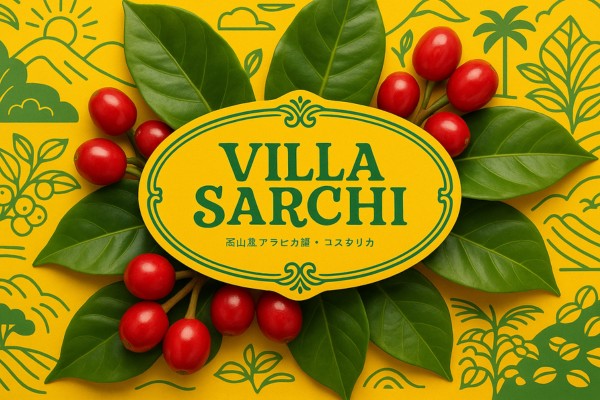
Geisha: The Queen of Coffees
Discover the remarkable story of the Geisha (or Gesha) variety, from its origins in the forests of Ethiopia to its stunning rediscovery in Panama. Learn what makes its extraordinarily floral and complex cup profile the most sought-after and highest-priced in the coffee world.
Geisha: The Coffee That Changed Everything
In the world of specialty coffee, one name stands above all others for its extraordinary quality, its staggering price tag, and its captivating story: Geisha (often spelled Gesha, to avoid association with the Japanese entertainers).
The Geisha variety is famous for its absolutely stunning and unique cup profile, which is intensely floral, tea-like, and complex, with a clarity and elegance unlike any other coffee. It is the coffee that has won countless competitions, broken world records at auction, and created a new category of "super-specialty" coffee.
Its story is one of mistaken identity, of rediscovery, and of the incredible genetic diversity that lies hidden in the wild coffee forests of Ethiopia, the birthplace of coffee.
A Long Journey from Ethiopia to Panama
The story of the Geisha variety begins in the 1930s in the dense, mountainous forests near the town of Gesha in southwestern Ethiopia. A British consul collected coffee seeds from this "Gesha forest" as part of a larger effort to catalogue the genetic diversity of coffee.
These seeds were sent to research stations in Tanzania and Costa Rica. For decades, the variety, known as accession T2722, was just one of thousands in various research collections. It was noted for its resistance to some forms of coffee leaf rust and for its distinct, elongated bean shape and sparse, elegant plant structure. However, it was not considered a particularly viable variety because its yields were very low.
In the 1960s, a Panamanian farmer named Don Pachi Serracin brought the Geisha variety to Panama from a research station in Costa Rica. He planted it on his farm, but it didn't seem particularly special and was often mixed in with other varieties.
The "Rediscovery" at Hacienda La Esmeralda
The Geisha variety remained in relative obscurity until the early 2000s. The Peterson family, owners of the farm Hacienda La Esmeralda in Boquete, Panama, noticed a particular plot of coffee trees that looked different. They were tall, thin, and had beautiful, elongated cherries.
They decided to harvest and process the cherries from these trees separately from the rest of their crop. When they cupped the coffee, they were astounded. The flavor was unlike anything they had ever tasted: an explosive bouquet of jasmine, bergamot, and tropical fruit, with a silky, tea-like body.
In 2004, they entered this coffee into the "Best of Panama" competition. It shattered all previous records for quality and price. The Geisha variety was "rediscovered," and the specialty coffee world was changed forever.
A Flavor Profile Unlike Any Other
The Geisha cup profile is the benchmark for elegance, complexity, and clarity in coffee.
- Acidity: The acidity is bright, clean, and complex, but rarely sharp. It often has a distinct citrus character, like bergamot or sweet lime.
- Body: The body is famously light and delicate, often described as "silky," "juicy," or "tea-like."
- Aroma: This is perhaps its most stunning attribute. The aroma is intensely and unmistakably floral. The most common descriptor is jasmine, but it can also have notes of orange blossom, rose, and coffee cherry blossom.
- Flavor: The flavor is a symphony of delicate and complex notes. Look for a foundational sweetness, with flavors of tropical fruits (like papaya, mango, and passionfruit), stone fruits (peach, apricot), and a finish that is reminiscent of high-quality bergamot tea (like Earl Grey).
A Demanding and Difficult Plant
While the reward is great, Geisha is a notoriously difficult and expensive variety to cultivate.
- Low Yield: The plants are not very productive, yielding a small amount of cherries.
- Fragile Plant: The plant has a relatively shallow root system and can be quite delicate, requiring specific soil and climate conditions to thrive.
- Altitude is Key: Geisha only develops its spectacular floral aromatics when grown at very high altitudes, typically above 1,600 meters. Grown at lower altitudes, it can taste bland and uninteresting.
- High Cost of Production: The low yield and specific needs mean that the cost of producing Geisha coffee is extremely high, which is a major factor in its high price.
Key Growing Regions
Panama will always be the country most famously associated with the Geisha variety, but its success has inspired farmers all over the world to plant it.
- Panama: The Boquete region of Panama is the spiritual home of the modern Geisha movement, and its coffees are still considered the benchmark for quality.
- Colombia: Colombia has become a major producer of high-quality Geisha, with its high-altitude farms proving to be perfect for the variety.
- Costa Rica: Many top farms in Costa Rica's West Valley and Tarrazú regions now produce spectacular Geishas.
- Ethiopia: In its native land, producers are now isolating and producing high-quality lots of the original Gesha variety.
- Other countries: High-quality Geishas can now be found in Peru, Honduras, Guatemala, and even parts of Asia.
Conclusion: A Coffee Superstar
The Geisha variety has created its own category of luxury coffee. It has shown the world the incredible spectrum of flavors that are possible in a single cup and has inspired a generation of farmers to focus on quality over quantity.
It is a demanding, low-yielding, and expensive coffee, but for those who have the chance to taste a truly great one, the experience is unforgettable. It is a coffee that delivers a sense of wonder and proves that there is always something new and exciting to discover in the world of coffee. Geisha is, without a doubt, the reigning queen of coffees.


